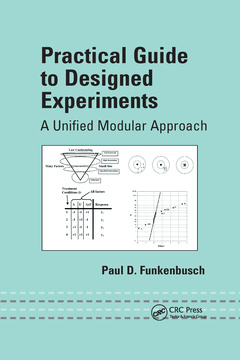Practical Guide To Designed Experiments A Unified Modular Approach Mechanical Engineering Series
Auteur : Funkenbusch Paul D.

Many engineers and scientists have receive little or no training in designed experiments, and any courses that are available tend to be either abstract and divorced from practical considerations or strictly practical-lacking the rigor and depth necessary for true, long-term understanding.
Practical Guide to Designed Experiments: A Unified Modular Approach bridges that gap, presenting the essential material in a manner that permits rapid application to practical problems but also provides the structure and understanding necessary for long-term growth. It covers two-level and three-level full and fractional factorial design and also includes the L12 and L18 designs popularized by Taguchi. The author describes the role and selection of the system response for measurement and optimization and discusses both conventional and Taguchi approaches, noting their similarities and differences.
Clearly written and well organized, this text shows how the components of experimental design fit and work together. Offering an abundance of examples, case studies, and practice problems, it is highly suited to anyone with a basic science or engineering background but little or no previous exposure to matrix experiments or other elements of planned experimentation.
Paul D. Funkenbusch
Date de parution : 09-2021
15.6x23.4 cm
Date de parution : 11-2004
15.2x22.9 cm
Thèmes de Practical Guide To Designed Experiments :
Mots-clés :
Independent Experimental Run; ANOVA Table; ANOVA Analysis; Control Factor Settings; Resolution Iv Design; RTP; Noise Factors; Screening Array; High Resolution Design; Normal Probability Plot; RTP; Quadratic Loss Function; Factorial Array; Full Factorial Design; Experimental Triangle; Control Factor Levels; Noise Conditions; Catapult Experiment; Taguchi’s Orthogonal Arrays; Resolution III; Noise Factor Levels; Total SS; ANOVA Result; Vice Versa; Control Factor



